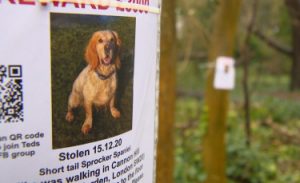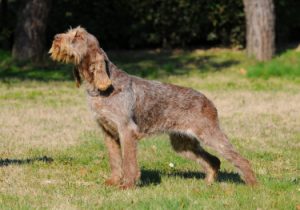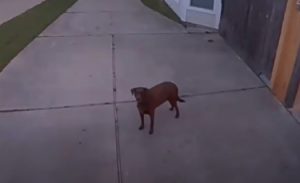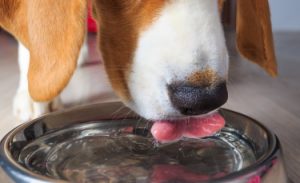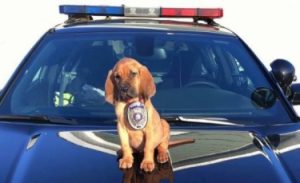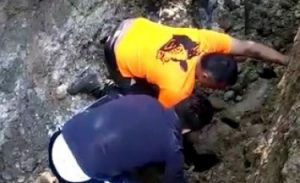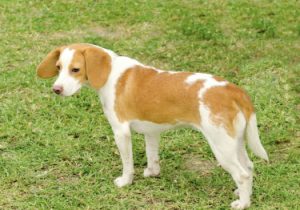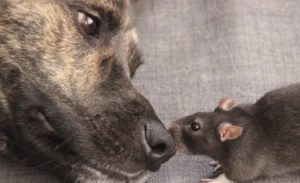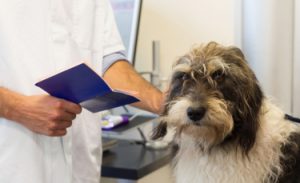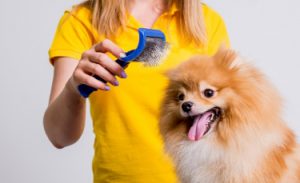Other name: Danish Mastiff
The Broholmer is a large mastiff type dog. Its silhouette is writable in a rectangle, its gaits are regular and give off an impression of power, accentuated by the imposing substance of its forehand. Strongly built, the Broholmer combines robustness and elegance in its appearance.
<!–
–>
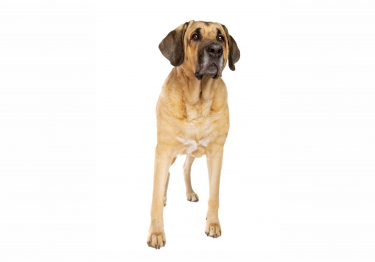
| Short | |
| Denmark | |
| Giant | |
| Triangular |
| Sex | Weight | Cut |
|---|---|---|
| Female | From 40 kg to 60 kg | From 70 cm to 75 cm |
| Male | From 50 kg to 70 kg | From 70 cm to 75 cm |
History of the breed
The origins of the Broholmer go back to medieval times when its ancestors were used in particular for deer hunting. The Broholmer is said to be descended from dogs brought back by the Vikings to Denmark and subsequently crossed with mastiff-type dogs originating in Germany. After the hunt, he stood out mainly for his skills as a guardian, securing a large number of large properties such as mansions.
The first true selections were made from the late 18th century, mainly under the leadership of Count Sehested Broholm which also gave it its name. The Broholmer breed found itself on the brink of extinction following World War II. It took 3 decades to regain correct staffing levels. From the mid-1970s, in fact, the Broholmer Reconstruction Society endeavored to perpetuate it, with the support of the Kennel Club of Denmark.
The Broholmer breed was definitively recognized by the Fédération Cynologique Internationale (FCI) on May 26, 1982. Its official FCI standard in force was published on June 26, 2000.
Broholmer Pictures
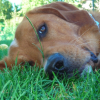
See all photos of Broholmer from Woopets members
Physical features
His hair: short and well laid against the body. The outer coat is associated with a thick undercoat.
Its color: fawn with black, red, gold or black mask, with or without white markings on the chest and on the feet.
His head: massive, broad and heavy. Reach low and tilted towards the ground when the dog is at rest. Raised when in action or awake. The skull is broad, rather flat, and the same length as the muzzle, which is massive. The stop is not overly marked. The nose is large and black, the lips drooping, the jaws muscular and articulated in scissors or pincers.
His ears: moderately large, set high and falling against the cheeks.
His eyes: round, medium size, light to dark amber in color, displaying a confident look.
His body: longer than tall, massive. The neck is powerful and muscular, the topline is straight, the withers strong and well marked, the back rather long, the croup moderately long and moderately sloping, the chest powerful and well let down.
Its tail: thick at its base, set rather low and carried drooping when the dog is at rest. Raised to horizontal when in action.
Behavior and character
| Affectionate | |
|---|---|
| Calm | |
| Protective | |
| Independent | |
| Hunter | |
| Barks / howls |
Behavior with others
| Cohabitation with children | |
|---|---|
| Sociable with other animals | |
| Love strangers |
The Broholmer is a dog with a balanced temperament . Rather calm and friendly with his family, he is naturally wary of strangers. This makes the Broholmer a good companion and a vigilant, dedicated, sure of himself and courageous guard.
The Broholmer
is it right for you? Take the test!
Education
| Clever | |
|---|---|
| Obedient |
To be sure that you can manage it properly in adulthood, it is imperative to give the Broholmer a very good quality education : it must be early, while having both firmness and gentleness . It is a question of making him know the limits not to cross, but without brutalizing him.
Living conditions
| Suitable for apartment living | |
|---|---|
| Good for new masters | |
| Love it hot | |
| Love the cold |
The Broholmer is certainly not a house dog. He needs large spaces and to benefit from a maximum of freedom of movement. He is happier in the country, but he can adapt to city life if he is walked around enough.
Health
| Solid | |
|---|---|
| Ease of gaining weight |
The Broholmer is a robust and fairly healthy dog. However, as with any large breed of dog, the risk of hip dysplasia and stomach dilation / torsion is never completely ruled out.
Hypoallergenic breed
No
Litter size
Between 4 and 8 puppies.
| Major concerns |
|
|||
| Minor concerns |
|
| Occasional concerns |
|
To guard against these risks and insure your companion in the event of health problems, Woopets recommends Broholmer dog insurance .
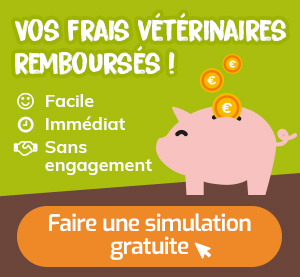
function showAssuranceForm () {var siteReferer = var id_race_association = ’87’; //console.log(id_race_association);success: function (html) {}});}document.addEventListener (‘DOMContentLoaded’, () => {$ (‘# assuranceModalBanner’). on (‘show.bs.modal’, function (event) {showAssuranceForm ();});});
Life expectancy
Minimum: 10 years
Maximum: 12 years
The life expectancy of a Broholmer is, on average, between 10 years and 12 years.
Calculate the human age of your Broholmer!
To choose… 1 year 2 years 3 years Four years 5 years 6 years 7 years 8 years 9 years 10 years 11 years old 12 years 13 years 14 years old 15 years old 16 years old 17 years 18 years old 19 years old 20 years 21 years old
Maintenance and hygiene
| Ease of maintenance | |
|---|---|
| Cost of maintenance | |
| Hair loss |
| Drool level | |
|---|---|
| Ease of grooming |
The Broholmer remains subject to 2 moults each year , usually occurring in the fall and spring. Its main maintenance measure is regular brushing.
It is recommended to brush the dog once a week apart from the moults and 2 to 3 times a week during the latter . This helps keep his dress and skin clean, while getting rid of dead hair.
His eyes and ears should be checked regularly to make sure there is no trace of dirt or any infection. If they do not wear out naturally, its claws need to be cut. If you are new to this, it is recommended that you seek advice from a veterinarian. His teeth need to be brushed frequently to eliminate the build-up of tartar and the proliferation of bacteria.
Price and budget
Purchase price
Mini
€ 1,500 Maxi
2000 €
The purchase price of a Broholmer is between € 1,500 and € 2,000.
Annual maintenance cost
Mini
800 € Maxi
1000 €
The annual maintenance cost of a Broholmer is between € 800 and € 1000.
No name is currently proposed. Use our tool to find your Broholmer’s name!
Food
His diet must be of high quality and provide him with all the nutrients he needs. It should also be adapted to its size, age and level of exercise. Its food is to be divided into 2 meals per day . In order to reduce the risk of gastric torsion, it is important to ensure that the Broholmer eats calmly and does not engage in any physical activity for the half hour before and after his meal.
Want the best for your dog?
Create the tailor-made power supply for your Broholmer
I discover !
PROMO -30% | Delivered to you!

Physical activity
| Athletic | |
|---|---|
| Energy level | |
| Potential to play |
The Broholmer needs a lot of exercise to thrive and burn off. Long daily walks allow him to be satisfied on this plan, but it is necessary to avoid too intensive physical activities which can damage his joints. It also thrives during outdoor play sessions with its owner and family.
Competitions
| Classifications & Standards |
|
Others
| Master character <span class="btnTooltip qTip2" title="- Calm: the master must be gentle and know how to show patience. – Active: the owner must be energetic and dynamic to live in harmony with his dog. – Hyperactive: the owner must be stimulating and very restless to suit the temperament of his dog.”> |
Active |
|---|
FCI Information
FCI No.
315
FCI Group
Group 2: Pinscher and Schnauzer – Molossoid and Swiss Mountain and Cattle Dogs and other breeds
Recognized by FCI
Since 1982
</div


